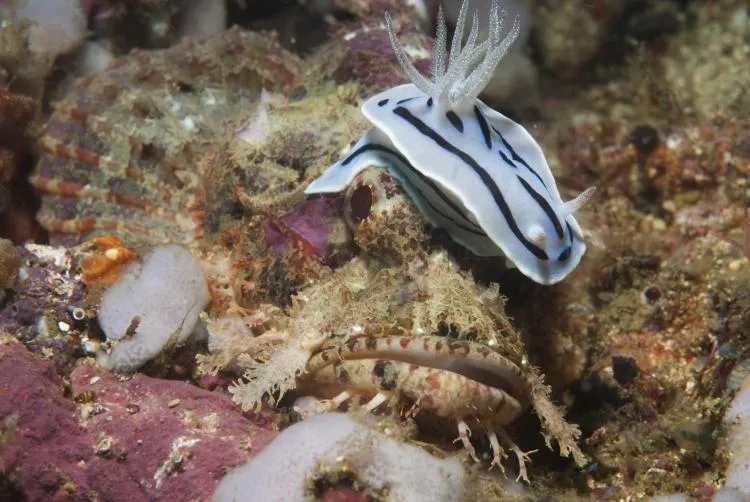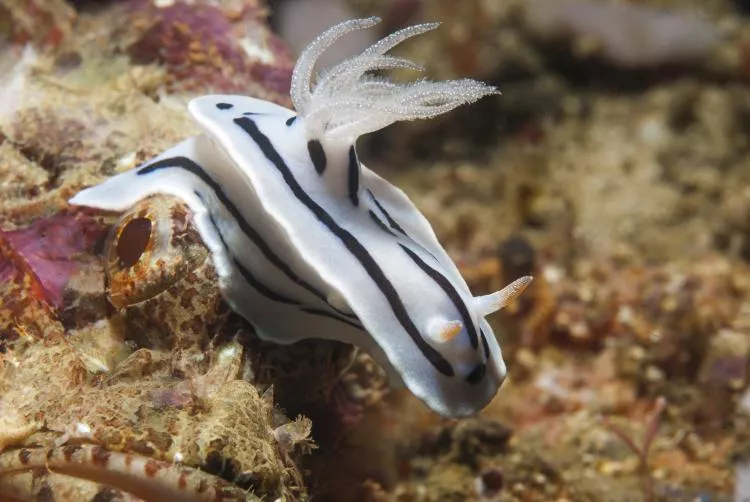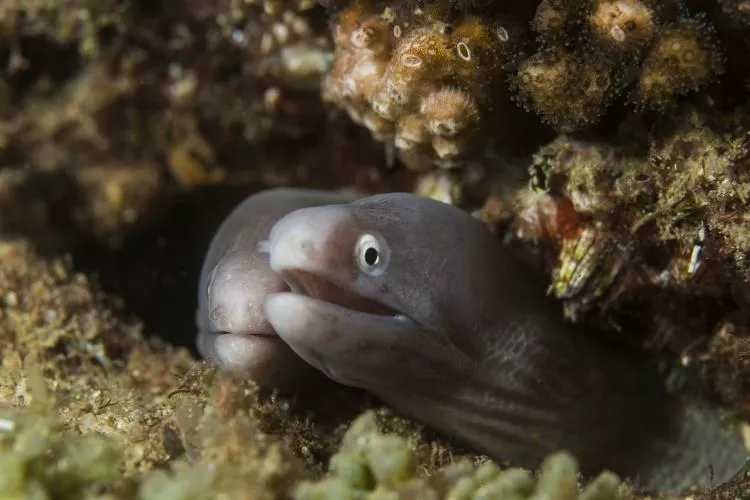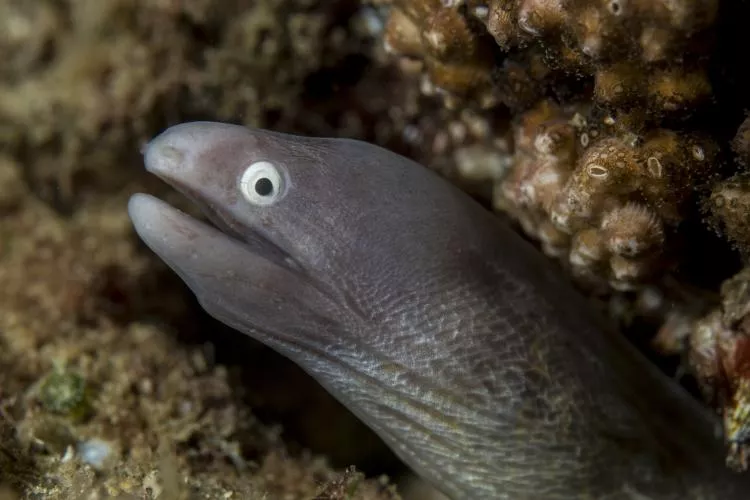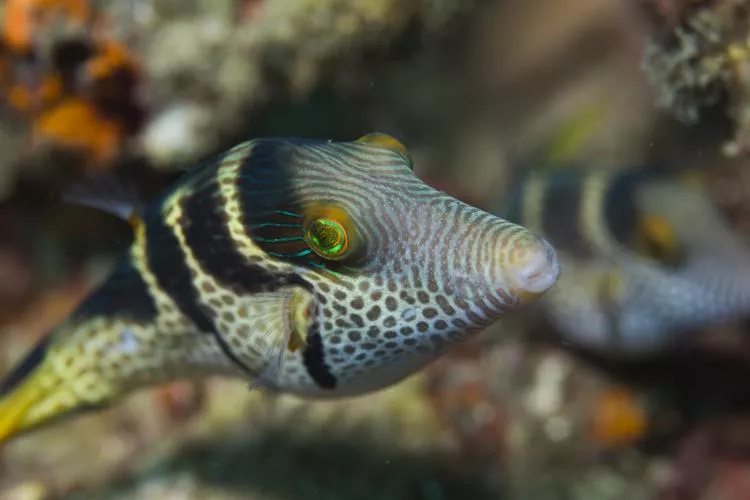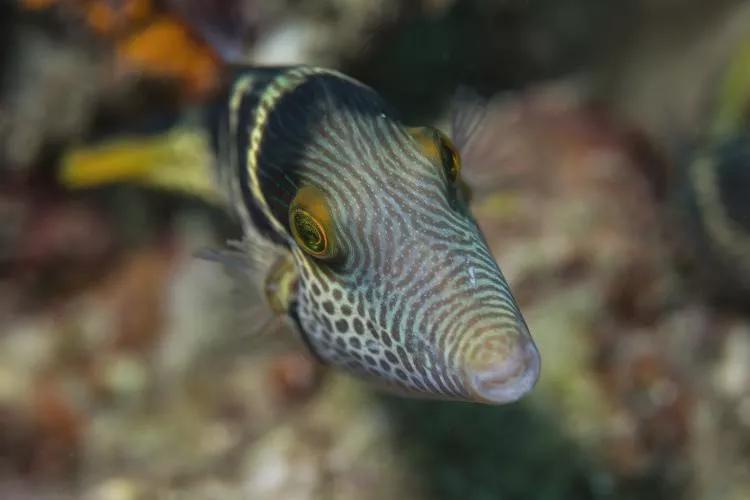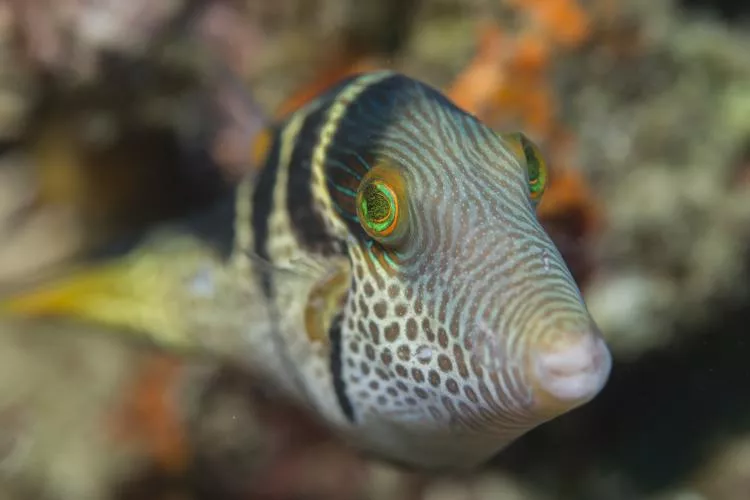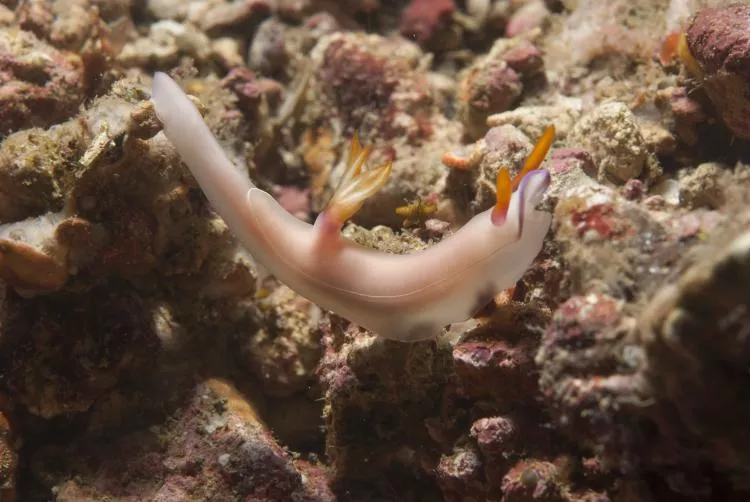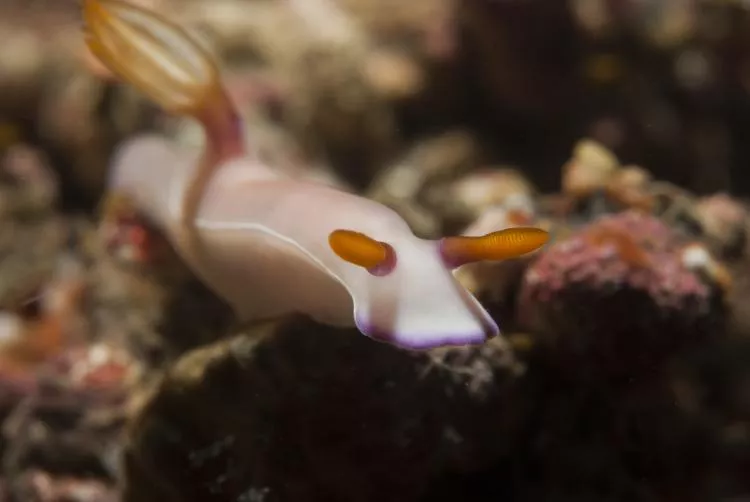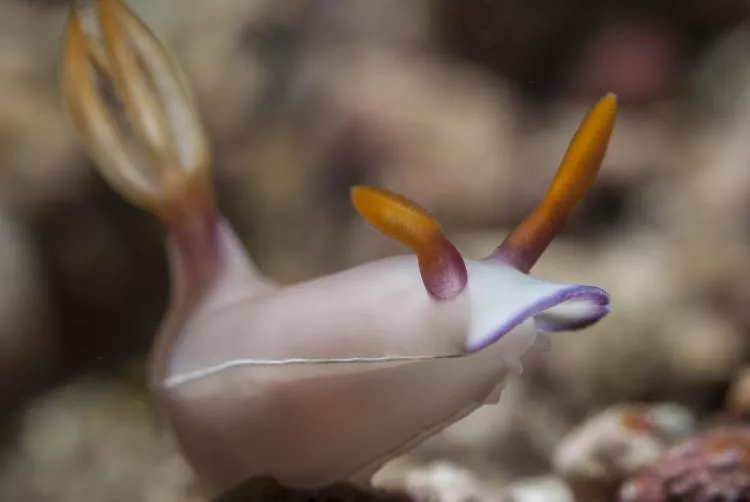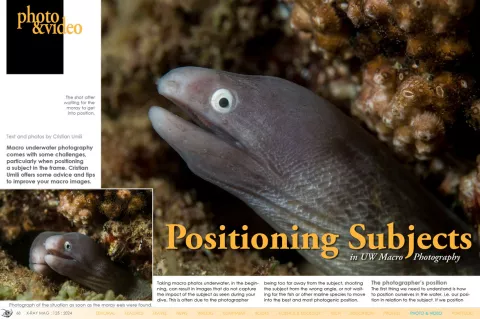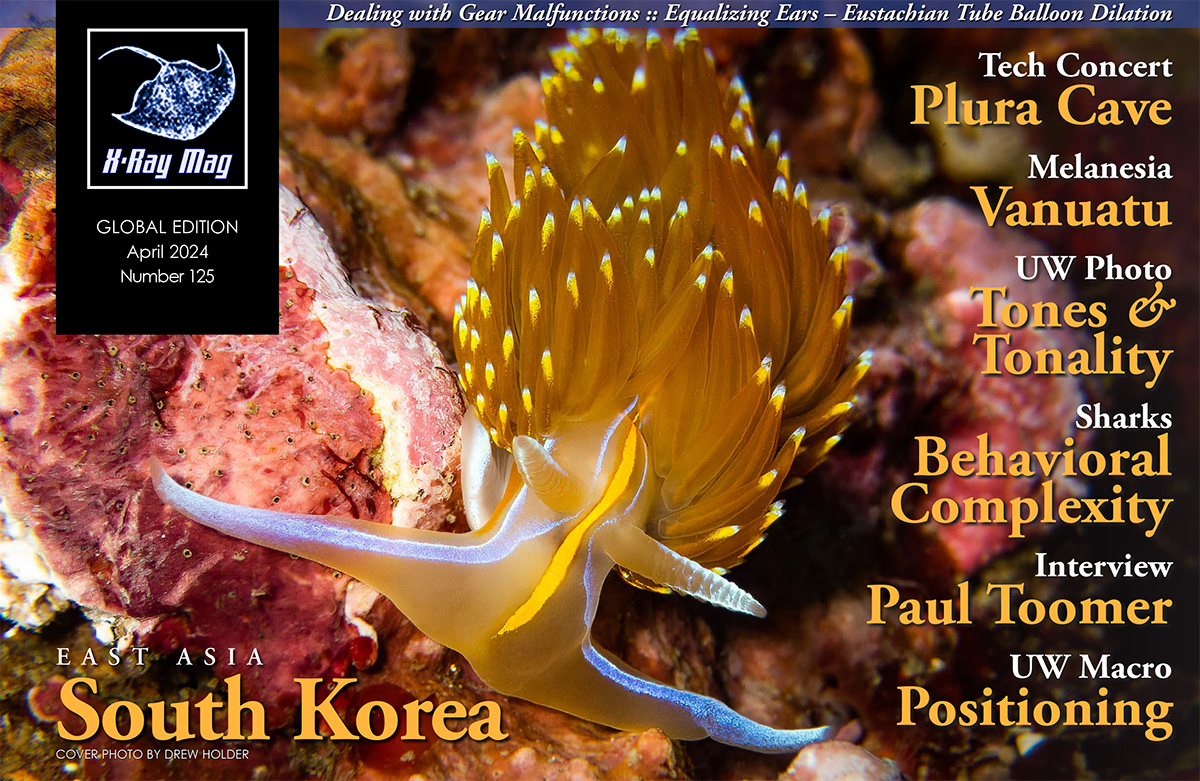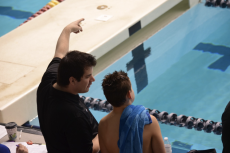Macro underwater photography comes with some challenges, particularly when positioning a subject in the frame. Cristian Umili offers some advice and tips to improve your macro images.
Contributed by
Taking macro photos underwater, in the beginning, can result in images that do not capture the impact of the subject as seen during your dive. This is often due to the photographer being too far away from the subject, shooting the subject from the wrong angle, or not waiting for the fish or other marine species to move into the best and most photogenic position.
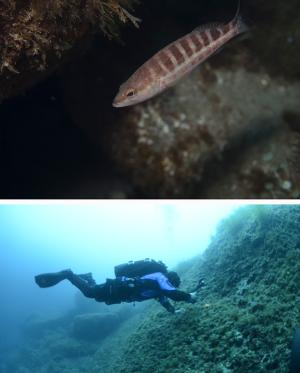
The photographer’s position
The first thing we need to understand is how to position ourselves in the water, i.e. our position in relation to the subject. If we position ourselves too high above the subject, we will be shooting from above, looking down, which will flatten the subject, and if the subject is well camouflaged, it will further blend into its surroundings, making it difficult to see in the picture. Another very common mistake is not getting close enough, which makes the subject too small in the picture.
To avoid this problem, always remember to place your camera at least at the same level as your subject, and that the subject is large enough to fill the viewfinder for a good visual effect. This has secondary benefits, such as making lighting easier and reducing the risk of your hovering over the subject having a negative impact on the image.
Waiting for the right position
Under water, subjects often move or are moved by the current. Even a subject that appears, at first glance, to be moving slowly (such as a nudibranch) will move quickly in your viewfinder if you frame it at a good magnification. Sometimes we get lucky, and the animal we want to photograph is already in a favorable position, sometimes not. If we encounter the second scenario, we will have to stop and observe the behavior, and if the animal is moving, it is best to wait for it to move into the desired position.
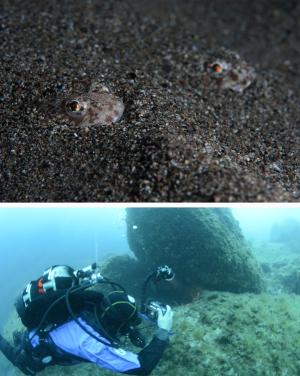
If we are unfamiliar with the species that we are photographing, we can stop after the first shot and observe how it moves. We can then position ourselves better for the shot or change the angle or position of the camera to frame the subject better and create a more compelling and dynamic photograph.
Focus on one subject
Sometimes on a dive, we will come across certain scenes where several animals of different species are involved. However, taking a shot of the whole scene often does not translate well into a photograph, and we end up with a confused image.
To improve this, we can move in closer and photograph only part of the scene, giving more importance to one subject and less to another. When photographing only part of the secondary subject, we must be careful to give the photo a pleasing crop that makes it clear what the secondary subject is.
Conclusion
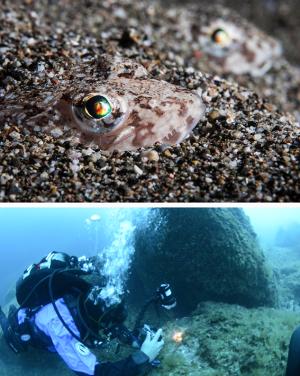
With a little patience and practice, photographers can improve their macro shots by changing their own position as well as the camera’s. Getting to know your subject and waiting for it to move into a good position will result in better images. ■

